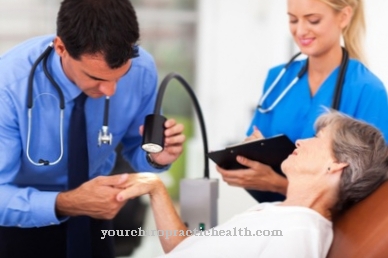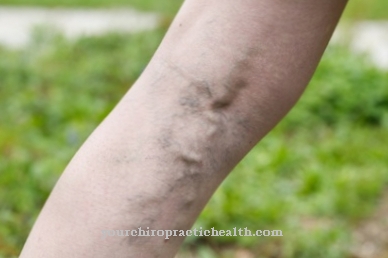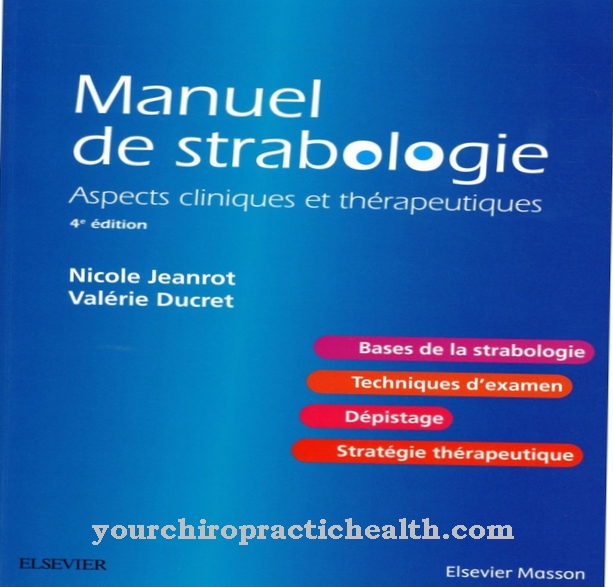In the health sector, the generic term gymnastics Physiotherapeutic or physiotherapeutic movement exercises summarized. Remedial gymnastics is used in various medical fields to alleviate symptoms or to improve body functions.
What is the gymnastics?

Different physiotherapeutic exercises that are beneficial for human health are called gymnastics or physiotherapy.
In the medical field, for example, gymnastics is concerned with healing physical impairments or improving mobility in the case of functional disorders or disabilities of the human musculoskeletal system. The gymnastic exercises can be done actively, passively, resistively or assistively. A specially trained physiotherapist or physiotherapist is usually responsible for performing therapeutic exercises.
Therapeutic gymnastics procedures were already used in antiquity. In the 18th century, a Swedish sports teacher developed a special form of gymnastics from sports gymnastics exercises that had therapeutic purposes. From 1810 on, mechanical aids were also used for physiotherapy exercises for the first time. This included devices with which the limbs could be trained and which were similar to the rehab devices of the present. Since 1994, the term "physiotherapy" has been used in Germany instead of physiotherapy. Remedial gymnastics is considered a sub-area of physiotherapy.
Function, effect & goals
Physiotherapy is a procedure that is prescribed by a doctor. It is made up of various forms of treatment and is used to restore or maintain the physical and psychological abilities of the person.
These can be negatively affected by health problems such as illnesses, congenital deformities, disabilities, everyday misconduct, injuries or accidents.
With the help of gymnastic exercises it is possible to alleviate or eliminate pain and to restore certain functions or movement sequences. Muscular imbalances can also be compensated and the physiological development of children can be promoted. In addition, the patient receives help to help themselves. In the field of orthopedics, gymnastics is useful for preventing and treating damage to the musculoskeletal system. Internal medicine uses gymnastic exercises to strengthen the human circulatory function. Methods such as pulmonary function training or cardiovascular training are used.
Basically, the field of therapeutic gymnastics is broad. Physiotherapy is now one of the most important medical treatment methods and is regularly carried out in hospitals, medical practices and rehabilitation facilities. The numerous areas of activity in gymnastics include orthopedics for back pain or spinal complaints, neurology for strokes, Parkinson's disease, multiple sclerosis or herniated discs with symptoms of paralysis as well as pediatrics (pediatrics), which among other things a. deals with childhood developmental delays or degenerative diseases of the muscles.
Further areas of application are pain therapy, in which chronic pain is treated, internal medicine, which deals with cardiovascular diseases, rheumatism, respiratory diseases such as asthma or vascular dysfunction, and rehabilitation, which aims to regain physical and mental abilities serves. Physiotherapy is also used for cancer diseases, in gynecology during pregnancy, in psychiatry and in sports medicine. With the latter, gymnastic exercises are carried out to optimize training and to treat sports injuries.
Remedial gymnastics is also important for prevention. Various ailments and diseases can be avoided through certain exercises. This primarily includes back pain. These can be avoided, for example, with the help of a special back training program. It is also possible to counteract the recurrence of problems in the case of existing health impairments.
Physiotherapy includes numerous different treatment methods. These are, for example, manual therapy, the Bobath concept, Brügger therapy, Vojta therapy, manual lymphatic drainage and various massages. These procedures have a beneficial effect on muscles and joints. Remedial gymnastics also includes passive procedures such as heat and cold applications, the application of fango packs, balneotherapy or electrical therapy. With the help of postural exercise, acute pain can be effectively alleviated by specifically strengthening the muscles. Another field of activity is respiratory therapy. The breathing muscles are relaxed through gymnastic exercises.
Physiotherapy also includes various relaxation methods as well as better awareness of the body. This gives the user greater self-esteem.
You can find your medication here
➔ Medicines against tension and muscle painRisks, side effects & dangers
So that the therapeutic gymnastics can also develop its positive effect, it should be carried out by an experienced therapist. So it is important that they observe all precautionary measures and contraindications. In this way, risks and side effects can be significantly reduced. However, these are rather low when performing gymnastic exercises.
Overweight people can overload their joints. This is especially true if you perform gymnastic exercises that are not suitable for you. Another contraindication is inflammation in the body. So there is a possibility that the gymnastics slows down or endangers the healing process. A further contraindication for physiotherapy are illnesses in which respiratory and cardiac output is restricted. The same is the case with a pronounced overactive thyroid or severe high blood pressure.
To avoid discomfort or nausea, it is recommended that you stop eating solid foods two hours before starting the exercise. In addition, extreme heat and elevated ozone levels should be avoided. In some cases, muscle soreness occurs after physical therapy exercises. Sometimes there are also small yellow spots on the skin. They are considered to be an indication of the breakdown of metabolic end products that come from the metabolism of the muscles. These end products dissolve in the course of gymnastics.













.jpg)

.jpg)
.jpg)











.jpg)